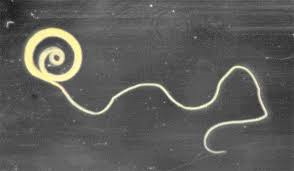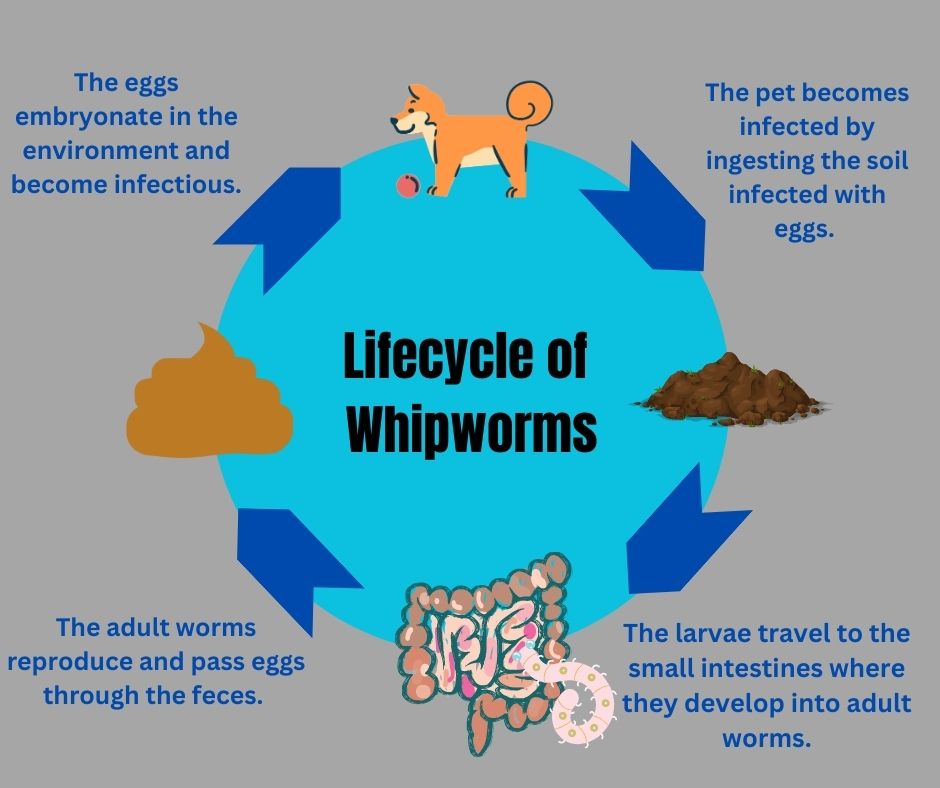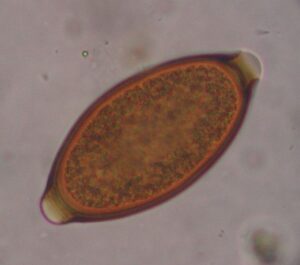
Whip Your Body Back and Forth, Whip Your Body Back and Forth
Whipworms are named for their “whip-like” appearance. These worms live in the intestines and sometimes the colon. They can cause bloody diarrhea. The scariest thing is that they can live in the environment for a long time – even several years!

The Whipworm Life Cycle
Whipworm eggs are found in the environment. They are so resilient, the eggs can even last years in the soil. The pet becomes infected when they ingest the eggs from the soil.
Larvae hatch from the eggs and migrate to the small intestine and sometimes the large intestine. There they become adult worms. The adults produce eggs that are shed in the feces.

Treatment
There are several medications available to treat whipworms, including the monthly intestinal parasite preventions!
Prevention
Many monthly preventions also treat active whipworm infections in addition to preventing future infections. That is another reason why it is important to start your pet on a monthly prevention early in life and keep them on the prevention life long!
It is also important to keep your pet on a monthly prevention to decrease the risk of shedding into the environment. Since whipworm eggs can stay in the environment for years, your pet can become reinfected regularly. It is much easier to prevent whipworm infections than it is to treat and clear them out of the environment!

Whipworm Testing
We test for whipworms by looking at fecal samples! The sample undergoes some processing in order to filter out some of the debris and make it easier to identify what we are looking for: the eggs that are shed in the feces.

Highlights
- Whipworm eggs can last for years in the environment.
- Whipworms are not considered zoonotic at this time, but it is still a good idea to act preventatively.
- It is much easier to prevent whipworms than to treat them since they stay in the environment for so long.
Now It’s Your Turn!
Don’t forget to use the information in this post to fill out your Parasite Bingo card.
